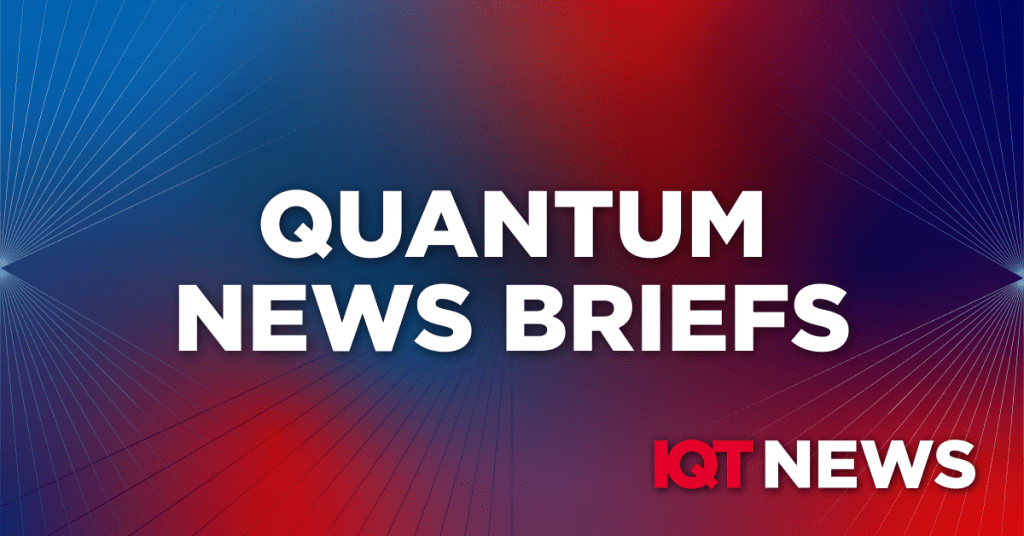JPMorgan Chase, Argonne and Quantinuum Show Theoretical Quantum Algorithmic Speedup in New Study
Researchers at JPMorgan Chase, the U.S. Department of Energy’s (DOE) Argonne National Laboratory and Quantinuum have demonstrated clear evidence of a quantum algorithmic speedup for the quantum approximate optimization algorithm (QAOA), according to a new paper in Science Advances on May 29.
“This work is a significant step towards reaching quantum advantage, laying the foundation for future impact in production,” said Marco Pistoia, head of Global Technology Applied Research at JPMorgan Chase.
To explore the quantum algorithm’s performance in an ideal noiseless setting, JPMorgan Chase and Argonne jointly developed a simulator to evaluate the algorithm’s performance at scale.
“Our long-standing partnership with JPMorgan Chase led to this meaningful and noteworthy three-way research experiment that also brought in Argonne.. . .said said Ilyas Khan, founder and chief product officer of Quantinuum.
Colorado Governor Signs Quantum Industry Bill
Colorado Gov. Jared Polis signed a new bill At a ceremony Tuesday, May 28, on the CU Boulder campus to support the state’s rapidly growing quantum industry, according to an announcement by CU Boulder. Polis signed the bill from the top floor of the JILA Tower, one of the epicenters of quantum research on campus.
The effort highlights Colorado’s status as a new Silicon Valley for quantum technologies. They include computers that could one day outperform even the fastest supercomputers today at certain tasks and sensors that can detect methane leaks in the air above oil and gas operations.
CU Boulder, including through its partnership with NIST, has been the heart of quantum research in Colorado. JILA was founded in 1962, and the JILA Tower opened five years later. Four scientists affiliated with CU Boulder have won the Nobel Prize in Physics for advancements in quantum science: Carl Wieman, Eric Cornell, John “Jan” Hall and David Wineland.
Researchers at Tsinghua University Achieve Largest-Scale Ion Trap Quantum Simulation
The research group led by Prof. Luming Duan at Tsinghua University has recently achieved a significant breakthrough in the field of quantum simulation. For the first time, researchers realized the stable trapping and cooling of a two-dimensional crystal of up to 512 ions and performed a quantum simulation with 300 ion qubits. Read the complete news release on the Tsinghua news site.
This work marks the world’s largest-scale multi-ion quantum simulation with single-qubit resolution, significantly advancing the previous world record of 61 ion qubits.
This work was supported by the Innovation Program for Quantum Science and Technology (2021ZD0301601, 2021ZD0301605), Tsinghua University Initiative Scientific Research Program, the Ministry of Education of China, the New Cornerstone Investigator Program, Tsinghua University Dushi program, and the start-up fund.
In Other News: Politico’s Derek Robertson interviews Jay Gambetta, the vice president of quantum computing at IBM Research.
In Other News: Politico’s 5 questions for IBM’s VP of Quantum Computing, Jay Gambetta
What’s one underrated big idea?
The difference between a quantum-centric supercomputer and a quantum computer.
What’s a technology you think is overhyped?
Quantum is overhyped in the short term, but it’s under-hyped in how it’s fundamentally changing what it means to compute. The use cases of quantum are overhyped, but the implications of what quantum is are probably under-hyped.
What book most shaped your conception of the future?
“Zero: The Biography of a Dangerous Idea” by Charles Seife. Math is something that a lot of people just take for granted. This book goes through a history of the number zero, which at first was just a place value.
What could government be doing regarding technology that it isn’t?
The fundamental investment in quantum physics is always good. But as we build these quantum computers, we need to make sure that we lead in building large-scale computers. It would be great if the U.S. made sure that the leading facilities here had the best quantum computers to explore algorithms and keep pushing us forward.
What surprised you most in the past year?
The error correction paper that we put out this year.
I was under the impression like everyone else that error correction in the surface code was going to be the best answer.
